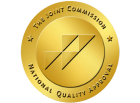For a while, rapid detox became the shiny new treatment for addiction. In essence, rapid detoxification claims to remove all addictive substances swiftly and safely from the body. In reality, a rapid detox increases the risk of relapse and the potential for detox-induced coma or death.
Despite the claims of rehabs who promote rapid detox, the procedure is incredibly dangerous and not a fast and easy “cure” for addiction. Why? There is very little evidence-based research to back up the unsubstantiated claims that support rapid detox.
Programs without evidence-based practices, treatments with decades of clinical and laboratory research, put their guests in harm’s way. There are serious, potentially fatal risks and high costs to this get-sober-quick scheme. While the thought of a quick and easy cure obviously sounds appealing, most people suffering from addiction recognize that kicking addiction isn’t that easy.
What Is Rapid Detox?
Typically, rapid detoxification involves a licensed physician administering an opioid antagonist, or opioid blocker, called naltrexone. In theory, naltrexone forces the body into a state of withdrawal, clearing the opioids from an individual’s system. As a result, the opioid blocker accelerates the withdrawal timeline from opioid drugs. Along with naltrexone, the medical staff administers general anesthesia to knock the person out for the worst of the withdrawal symptoms.
The big selling point of rapid detox is that it’s quick, easy, and painless. People are lead to believe that they come into the rapid detox with a full-blown addiction, sleep through the withdrawal, and wake up free of drug dependence and cravings.
The problem? Most people who undergo rapid detox gain a false sense of security. In fact, medical professionals have been known to mislead their guests, implying that by removing the toxins from their bodies, rapid detox removes their addiction. As a result, guests are shocked in the days following rapid detoxification that their cravings return as the naltrexone wears off. In essence, once the opioid blocker leaves their body, an intense urge to use and relapse takes its place.
As such, the misinformed guest leaves the detox center believing that they are cured. The implication that a mere matter of hours in rapid detox removes all addiction from a person is extremely toxic and negligent. So, without the therapeutic practices of inpatient treatment, they set out on their own without the self-awareness and sober support needed to maintain their recovery. As a result, tragedy often strikes once the naltrexone has depleted and the cravings return.
Risks of Rapid Detox
Most people who elect to try rapid detox have very little understanding of the potential negative side effects. In other words, people struggling with their addiction attempt to heal themselves, thinking that the faster they get off drugs or alcohol the better. However, abrupt cessation of narcotics results in agonizing withdrawal symptoms. On top of this, the use of naltrexone in conjunction with general anesthesia lacks any evidence-based research and is a risk to patient safety.
Side effects of Rapid Detox include:
- Anxiety and paranoia
- Psychosis
- Delirium
- Abnormally high body temperature
- Nausea and vomiting
- Breathing abnormalities harming lung function
- Choking
- Renal failure
- Heart failure
- Coma
During rapid detox, the naltrexone-anesthesia combo puts enormous stress on the body and has resulted in multiple-organ failure, psychosis, and suffocation. If the person makes it through the withdrawal process without severe complications, they will still likely experience precipitated withdrawal symptoms following the procedure. Ironically, rapid detox is advertised as a safe and effective detox process with none of the pain associated with drug and alcohol withdrawal. On the contrary, rapid detox withdrawal exponentially increases the physical symptoms of an average medical detox. In fact, a large number of people who undergo a rapid detox will relapse to ease the mental and physical anguish following rapid detox.
Post-Procedure Risks
To combat the unbearable severity of naltrexone-induced withdrawal symptoms, rapid detox medics administer sedatives like anesthesia to put their patients under for the worst of the withdrawal symptoms. Unfortunately, this runs the risk of creating a new addiction to the sedative medication used to lessen rapid detox-induced pain. As a consequence, the people using rapid detox often trade one addiction for another. In fact, people leave the rapid detox facility to withdraw from the initial substance in addition to the sedative medication.
Potential risks following Rapid Detox:
- Sedative Addiction
- Severe Cravings
- Amplified Mental Disorder
- Intensified Withdrawal
- Relapse
- Overdose
- Death
Once the worst of the withdrawal symptoms have passed and the naltrexone wears off, cravings reappear with an unmatched intensity. Due to this, many people relapse to appease their cravings. Unfortunately, relapsing after a rapid detox often leads to an overdose and death. This is because the opioid blocker naltrexone cancels out the euphoric high of opioids. As a result, people take more and more of the drug to feel high. However, in their frantic attempts to find relief, people often die. Often, they don’t realize that while naltrexone is in their system, they won’t be able to physically experience the effects of an opioid. In other words, rapid detox causes tortuous withdrawals, unbearable cravings, and relapse.
The Cochrane Database and Systematic Review, a medical database supported by the National Center for Biotechnology Information (NCBI), concluded that “the adverse events are potentially life-threatening, the value of antagonist-induced withdrawal under heavy sedation or anesthesia is not supported” and that rapid detox treatment “should not be pursued” in 2006.
And yet, here we are.
Does Rapid Detox Work?
Rapid detox is an addiction treatment used to remove toxic substances from an addicted person’s body. Rapid detox physicians have regarded this treatment as a fast, safe, and painless alternative to regular medical detox practices. In fact, rapid detoxification has been referred to as a quality method that eliminates withdrawal pain in a much more efficient timeline.
The American Society of Addiction Medicine (ASAM) concluded that “opioid withdrawal management using ultra-rapid opioid detoxification (UROD) is not recommended due to high risk for adverse events or death” and that “naltrexone-facilitated opioid withdrawal management can be safe… in cases in which anesthesia or conscious sedation are not employed.”
In short, while ASAM now acknowledges that, while naltrexone-assisted opioid withdrawal management can be safe as effective, rapid detox is not. This is because rapid detox administers extremely high doses of naltrexone in tandem with anesthesia— which ASAM does not support rapid detox as a safe, sustainable treatment practice.
Similarly, ASAM guidelines for the prescribing of naltrexone state “a patients’ psychosocial needs should be assessed, and patients should be offered or referred to psychosocial [therapuetic] treatment based on their individual needs, in conjunction with naltrexone in the treatment of opioid use disorder.” Do note, ASAM modified its original stance— that naltrexone should not be prescribed for detox without an accompanying recovery program— because of the overwhelming spike in opioid-related deaths.
To clarify, ASAM supports the inclusion of therapy with opioid blockers because has been established that detox alone is not likely to produce prolonged abstinence. ASAM no longer requires additional treatment to lessen treatment restrictions.
Regardless, the high potential for relapse, overdose, and death involved with rapid detoxification must be explained prior to treatment. In addition, people considering rapid detox require education on the many safer, more effective alternatives available to them.
Is Rapid Detox Fast?
Rapid detox claims to provide a full detox within 4-6 hours. What they don’t say is that patients continue to experience withdrawal after the rapid detox sedation wears off. As a result, patients discharged from the facility, returning home only to suffer through withdrawals alone. This act of negligence often leads people to relapse in an attempt to stop the continued withdrawal pain. Above all, the risk of complications far outway the remote chance of recovery when safer options are available.
While any substance, or substance combination, has the potential for death when undergoing rapid detox, the threat is highest with alcohol or benzodiazepines. This is because both alcohol and benzo withdrawal, which can result in fatal seizures, require a slow removal from the body slowly to decrease the deadly side effects. Additionally, patients have experienced adverse reactions to rapid detox medications, resulting in life-threatening side effects.
To that end, rapid detox presents a minuscule chance of success of abstinence for an extended period of time. In most cases, people still require residential treatment or intensive outpatient services to sustain their recovery without the high risk of relapse.
Is Rapid Detoxification Expensive?
Depending on the rapid detox treatment provider, this procedure costs from $2,000 to over $10,000. The treatment is often in a hospital setting, utilizing sedating medications, and intensive-care type monitoring.
Insurance companies typically deny coverage for rapid detoxification treatment because it’s not medically necessary.
Quality Alternatives For Detox
Two medication-assisted detox options used in traditional detoxification centers are methadone, buprenorphine, or combination buprenorphine/naloxone.
Replacement addictions are more common with methadone, leaving buprenorphine/naloxone as the safest option, although buprenorphine is a potentially addictive opioid too. Opioid detoxification medications assist guests in tapering off opioids while treating the uncomfortable withdrawal symptoms.
Doctors can prescribe other detox medications to manage symptoms of withdrawal as well, but they should not be prescribed without an attached recovery program.
Quality opioid use disorder treatment programs can include:
- Medical Detox
- Residential Inpatient
- Partial Hospitalization
- Intensive Outpatient
- Outpatient
- Sober Living
Rapid detox isn’t a quick cure for addiction– it is unsafe and ineffective for treating opioid use disorder. Taking shortcuts and selling rapid detox as a get-sober-quick “cure” is negligent and irresponsible. Addiction is a condition of the brain, not just a condition that affects the body. It requires comprehensive addiction treatment in addition to safer and evidence-based medication-assisted detox methods followed by a treatment program.
Our team of addiction specialists is available 24/7 at (877)-RECOVERY. We are here to answer any questions about our detox program for opioid withdrawal in addition to any other questions you may have. Because We Care.
References:
The ASAM National Practice Guideline For the Treatment of Opioid Use Disorder 2020 Focused Update – Part 3: Treating Opioid Withdrawal, #7; Part 6: Naltrexone, #4 Major Revision
The Cochrane Database and Systematic Review, “Opioid antagonists under heavy sedation or anesthesia for opioid withdrawal,” April 19, 2006.












